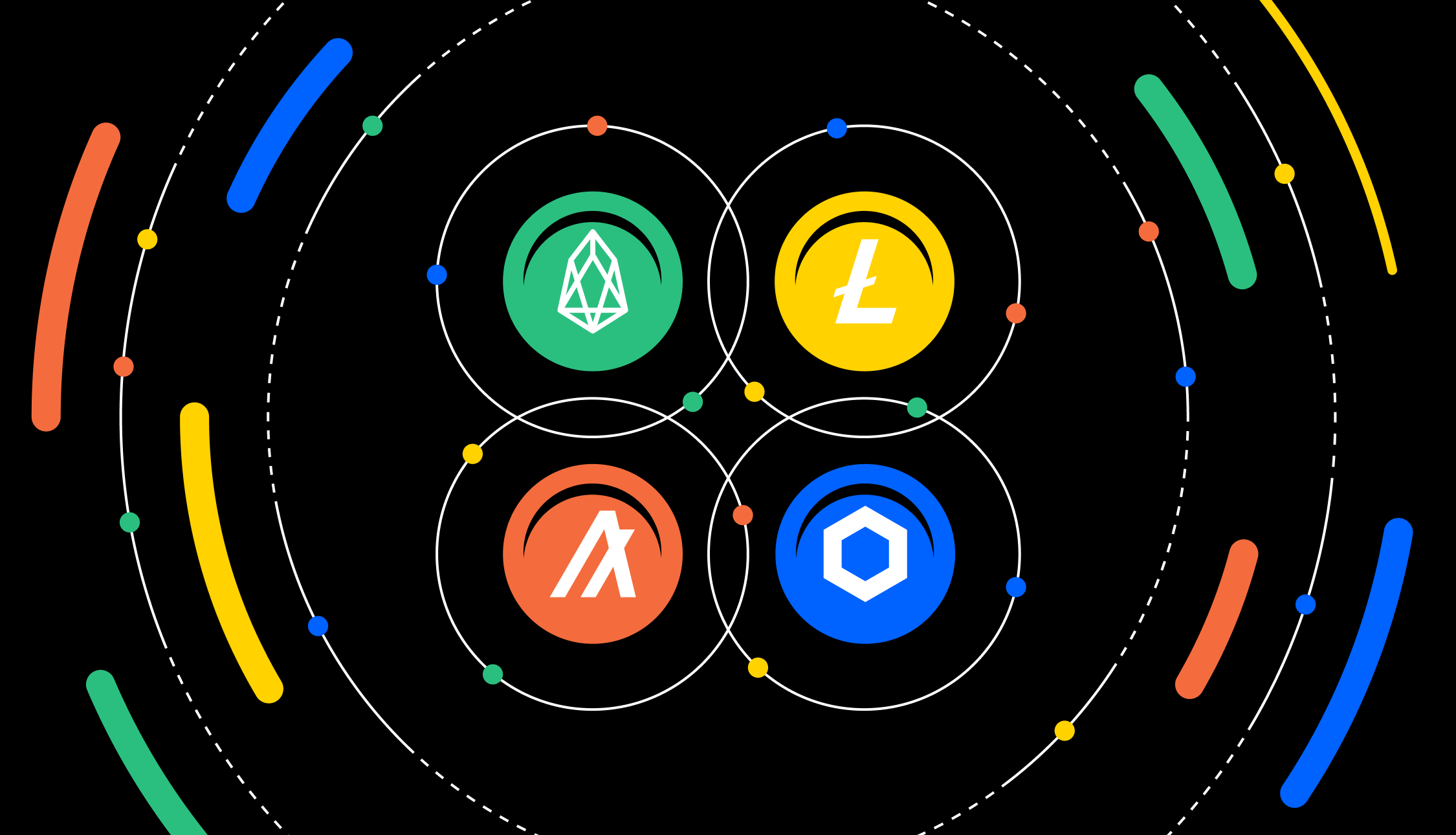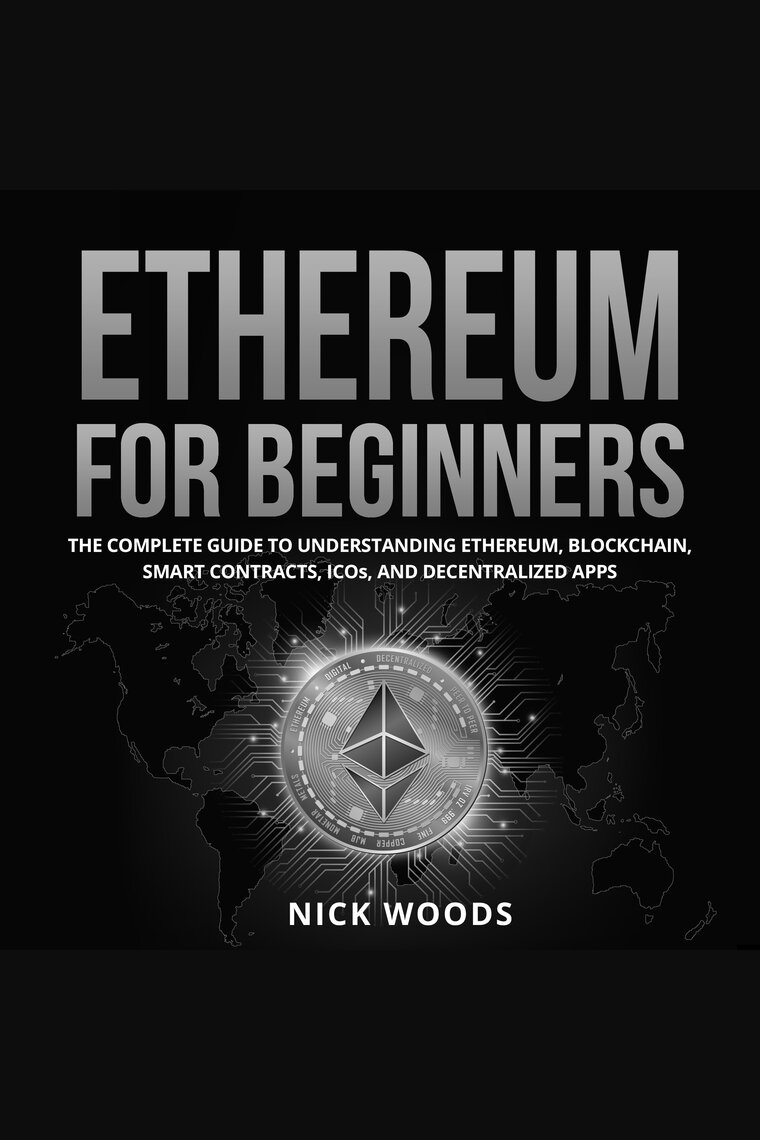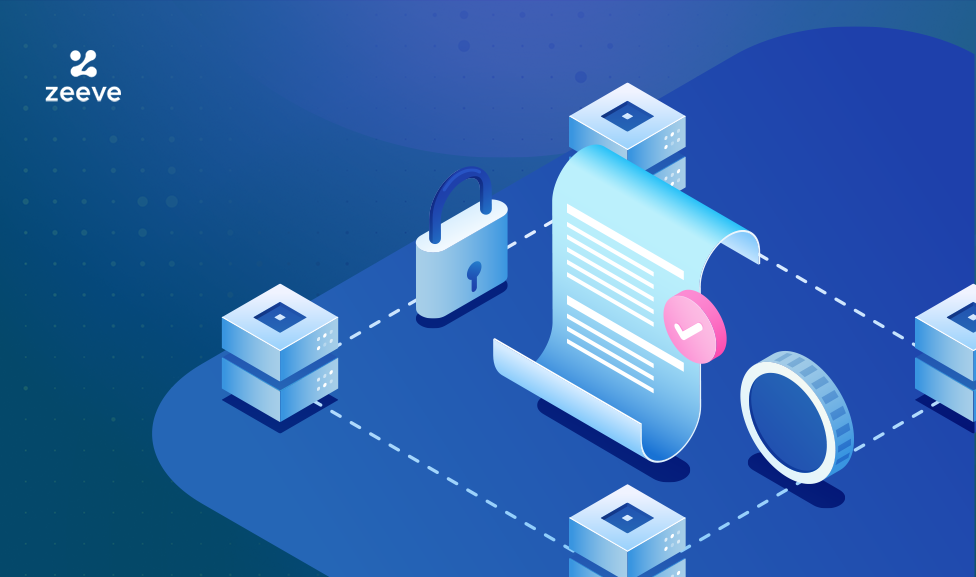Staking is a process in which users hold and lock their cryptocurrency to support the overall network operations of a blockchain. By doing so, they have an opportunity to earn rewards for their participation. Staking has gained significant attention in the cryptocurrency industry, as it offers an alternative to traditional mining methods. In this guide, we will delve into the details of staking, along with exploring related concepts such as blockchains, oracles, and DeFi.
Blockchains are decentralized ledgers that store and manage transaction records across multiple computers. They are the foundation of cryptocurrencies and enable the secure transmission of digital assets. Blockchains use cryptography, a technique that ensures the integrity of data and provides a secure environment for financial transactions. Through the use of consensus mechanisms like proof-of-stake (PoS), blockchains validate and confirm transactions without the need for a central authority.
Oracles are essential components for the functioning of blockchain networks. They act as bridges between blockchains and the real world by providing external data (such as price feeds or weather reports) to smart contracts running on the blockchain. Oracles play a crucial role in decentralize finance (DeFi) applications, which are built on blockchain platforms and aim to recreate traditional financial systems with the use of smart contracts and cryptocurrency. By connecting blockchain systems with real-world information, oracles help to ensure that contracts can be automatically executed based on accurate and reliable data.
When it comes to staking, there are various options available to users. Some blockchains have built-in staking features, while others require the use of external staking providers. Staking services generally offer different levels of rewards based on factors such as the duration of the stake and the amount of cryptocurrency being staked. Users can choose between custodial staking, where the staking provider holds the user’s funds, or non-custodial staking, where the user retains control of their funds in their personal wallet.
Throughout this guide, we will explore the dynamics of staking, including how to stake, why it is a suitable investment option, and the risks involved. We will also take a closer look at popular staking platforms and cryptocurrencies, such as Aave, and review the best practices for staking. Whether you are a seasoned cryptocurrency user or just starting, this comprehensive guide will provide you with the necessary understanding of staking, blockchains, oracles, and DeFi to help you make informed decisions and navigate the exciting world of decentralized finance.
What is Staking and How Does It Work?
Staking is a process in which users of a blockchain ecosystem lock up their tokens to participate in the consensus mechanism of the network. By staking their tokens, users contribute to securing the blockchain and validating transactions, while also earning additional tokens as a reward for their participation.
When users stake their tokens, they delegate their voting power to a selected node or validator. This means that they authorize the node to represent their interests and make decisions on their behalf. In return for staking and participating in the network, users earn yields or rewards, which accrue over a specific period of time.
Staking is commonly associated with Proof-of-Stake (PoS) blockchains, where consensus and security are enforced through validators rather than through mining like in Proof-of-Work (PoW) blockchains. PoS allows for a more energy-efficient and environment-friendly approach to securing the blockchain.
To stake their tokens, users need to navigate through a suitable wallet or staking platform. They must select the desired amount of tokens to be staked and undergo the staking process. Once the tokens are staked, they cannot be transferred or traded until the staking period is over or until the user decides to unstake them.
During the staking period, users can track the progress of their staked tokens using a blockchain explorer or the staking provider’s website. They can see the number of blocks produced, their rewards, and the current state of their staked tokens. It’s essential to note that staking also comes with risks, such as the possibility of the network failing, which may result in users losing part or all of their staked tokens.
Staking has become an integral part of the decentralized finance (DeFi) ecosystem, where users can stake their tokens to earn passive income or participate in governance and decision-making processes. It’s a way for token holders to actively engage and contribute to the growth and development of the blockchain ecosystem.
Exploring Blockchains and Their Role in Staking

Understanding how blockchains work is essential to grasping the concept of staking. Blockchains are decentralized, transparent, and secure digital ledgers of transactions. They rely on a network of computers, known as validators or miners, to maintain and validate the integrity of the chain. These validators or miners use complex mathematical algorithms to solve cryptographic puzzles and add new blocks of transactions to the chain.
To participate in staking, one must first understand what it means to be a chain-minder in a blockchain network. Chain-minders are responsible for validating transactions and maintaining the security of the network. They lock up a certain predetermined amount of their own cryptocurrency, known as a stake, as collateral to ensure they act honestly. If they act maliciously or provide incorrect information, this stake can be forfeited.
There are different types of blockchains and consensus mechanisms, each with their own rules and requirements for staking. In some blockchains, like Ethereum, staking is used to earn interest or rewards by locking up a certain amount of cryptocurrency. In others, like Synthetix, staking is used to validate transactions and maintain the chain’s integrity. Some blockchains may require a minimum stake to participate, while others may have no minimum requirement.
Blockchains also rely on oracles to provide external data to the network. Oracles are trusted sources of information that can be used to generate proof of real-world events or activities. They are often used in decentralized finance (DeFi) applications to retrieve price data for asset exchanges, using platforms like Chainlink for secure and reliable data feed.
When staking in a blockchain network, investors lock up their assets to earn rewards in the form of interest or fees. In order to earn these rewards, they must validate transactions and contribute to the security and efficiency of the network. This process also helps to maintain the integrity of the blockchain and prevent malicious actors from manipulating the system.
Depending on the blockchain network, staking can have different dynamics. Some networks allow users to unstake their funds at any time, while others have specific lock-up periods, such as a 28-day minimum. Validators or miners may also have the ability to vote on proposals that could impact the direction of the blockchain. It is important for stakers to stay informed and review network updates to understand what changes may occur.
In summary, blockchains play a vital role in staking by providing a decentralized and secure infrastructure for users to contribute to the network’s operation and earn rewards. Validators or miners validate transactions, maintain the integrity of the chain, and help secure the network. Oracles provide external data to the blockchain, while stakers lock up their assets to earn interest or fees. Understanding these concepts is crucial for anyone looking to participate in staking and make informed investment decisions.
The Importance of Oracles in the Staking Process
Oracles play a crucial role in the staking process within blockchain networks. As staking involves the proof-of-stake (PoS) consensus mechanism, where participants validate and append new blocks to the previous blockchain state, the role of oracles becomes even more significant.
Oracles act as a bridge between on-chain and off-chain data. They provide a secure and decentralized way of retrieving real-world information, such as trading prices, weather conditions, or insurance reports, which are necessary for validating block transactions.
When staking, the selection of oracles is essential, as they must be trusted sources of data. The chosen oracles then report this data to the blockchain network, ensuring its accuracy and reliability.
Each blockchain protocol may have its own set of oracles or a specific process for selecting them. For example, the Cosmos Network requires validators to make an explicit decision on which oracles they trust and prefer to use for the specific blockchain they are validating.
In the staking process, oracles also play a role in validating transactions and charges associated with the staking activities. They verify if the delegated funds are within the minimum required amount and ensure that any fees or charges are accurately calculated and distributed among the participants.
Furthermore, oracles are crucial for staking networks like Polkadot, where the staking process involves unbonding and redelegation. Oracles help validate this process, ensuring the security and integrity of the network.
In summary, oracles are essential for the staking process as they bridge the gap between on-chain and off-chain data, provide accurate and reliable information, validate transactions and charges, and ensure the security and integrity of the network.
Understanding DeFi and Its Relationship to Staking
Decentralized finance, or DeFi, has emerged as a revolutionary concept in the financial industry. It is a system that allows for the creation and management of financial instruments using smart contracts on a blockchain. Staking is an integral part of the DeFi ecosystem and plays a crucial role in its operations.
Staking refers to the process of locking up cryptocurrencies in a wallet to support the operations of a blockchain network. These cryptocurrencies are known as staked assets and are used to validate transactions, secure the network, and maintain consensus. Staking enables token holders to actively participate in the network and earn rewards for their contribution.
One of the key benefits of staking in the DeFi ecosystem is the ability to earn passive income. When a client stakes their assets, they are essentially lending them to the network in exchange for rewards. These rewards can be in the form of additional tokens or a share of the transaction fees generated by the network.
Staking also plays a crucial role in ensuring the security and integrity of the blockchain network. By staking their assets, users become validators and are responsible for verifying and validating transactions. This helps to prevent malicious activities and attacks such as double spending, ensuring the reliability and trustworthiness of the network.
In addition to earning rewards and securing the network, staking also offers other benefits to users. For example, it allows for the easy migration of assets within the DeFi ecosystem. Users can easily switch from one staking protocol to another without the need for additional transaction fees or charges. This flexibility enables users to optimize their staking strategies and take advantage of different opportunities within the ecosystem.
However, it is important to note that staking does come with its own set of risks. Users must carefully consider the risks associated with staking, such as the possibility of losing their staked assets due to technical failures or malicious activities. It is crucial to choose reputable staking platforms and protocols to minimize these risks and ensure the safety of your assets.
Overall, staking is an essential component of the DeFi ecosystem and plays a crucial role in its operations. It allows users to actively participate in the network, earn passive income, and contribute to the security and integrity of the blockchain. However, users must also be aware of the risks involved and take necessary precautions to protect their assets.
Benefits and Risks of Staking in the Cryptocurrency Space
Staking is the process of participating in the validation and consensus of a blockchain network by actively participating in the network’s activities. This process involves locking up a specific amount of cryptocurrency, such as Bitcoin, in a staking wallet or smart contract. There are several benefits and risks associated with staking in the cryptocurrency space.
Benefits of Staking:
- Earn Passive Income: Staking allows cryptocurrency holders to earn rewards in the form of additional tokens for actively participating in the validation process. These rewards can provide a passive income stream over a certain period.
- Engage in Governance: Staking often comes with the ability to participate in governance decisions of the blockchain network. Holders can vote on proposals, offer suggestions, and have a say in the future direction of the ecosystem.
- Support Decentralization: By staking their tokens, participants help secure the blockchain network and contribute to its decentralization. This helps to maintain a sybil-resistant consensus and prevent malicious actors from gaining control.
- Locking Intrinsic Value: Staking locks the tokens, reducing their availability for trading and potentially increasing their value. This can create a positive impact on the market and provide stability to the ecosystem.
Risks of Staking:
- Unbonding Period: When staking, there is often an unbonding period before tokens become readily available for withdrawal or transfer. This can limit liquidity and flexibility in accessing funds.
- Smart Contract Risks: Staking involves the use of smart contracts, which can be complex and prone to bugs or vulnerabilities. If a smart contract is compromised, there is a risk of losing the staked tokens.
- Market Volatility: The value of staked tokens is subject to market fluctuations. If the price of the cryptocurrency drops significantly, the rewards earned through staking may not be enough to offset the losses.
- Community Consensus: Staking often involves participating in the community’s decision-making process. However, if the majority of participants choose to act in their own interest rather than the best interest of the network, it can lead to conflicts and potentially harm the ecosystem.
In conclusion, staking in the cryptocurrency space offers several benefits, such as earning passive income, engaging in governance, and supporting decentralization. However, there are also risks associated with staking, including unbonding periods, smart contract vulnerabilities, market volatility, and community consensus. It is important for individuals to thoroughly understand these risks and choose their staking strategy wisely based on their risk tolerance and long-term goals.
Choosing the Right Validator for Staking
When it comes to staking, choosing the right validator is crucial. Validators play a vital role in securing the blockchain network and validating transactions. They are responsible for maintaining the integrity of the network and ensuring that transactions are accurate and valid.
Before you start staking, it is important to carefully review the available validators and select one that meets your requirements. Each validator may have different conditions for staking, such as a minimum stake requirement or specific staking periods. It is important to understand these conditions and ensure that you have the necessary funds and time commitment to stake with a particular validator.
There are various validators to choose from, such as stakefish, which offers staking services for Ethereum and Polkadot networks. Each validator may have its own variation of rewards and requirements, so it is important to understand what each validator offers before making a decision.
In order to choose the right validator, you can conduct research on their website, read reviews, or even request an interview with the validator team. This will give you a better understanding of their expertise, professionalism, and readiness to support your staking needs.
Another important factor to consider when choosing a validator is the level of security they provide. Validators should have sybil-resistance facilities in place, robust cryptography, and secure web and command-line interfaces. They should also have a strong track record in securing the network and have a reputable team of experts.
Additionally, it is important to consider the liquidity of the validator. Some validators may require a minimum lock-up period for staked funds, which could limit your access to liquidity. If you value liquidity and flexibility, you may want to choose a validator that offers more flexibility in terms of withdrawing your staked funds.
In summary, choosing the right validator for staking involves carefully reviewing their conditions, rewards, security measures, liquidity options, and reputation. Conducting thorough research and considering your own investment goals and priorities will help you make an informed decision. Ultimately, the right validator will play a crucial role in your staking experience and ensure that your funds are secure and your rewards are maximized.
Factors to Consider When Redelegating CRO to a Different Validator
Redelegating CRO to a different validator can be a strategic move for users looking to maximize their staking rewards and decentralize the network. However, there are several factors to consider before making this decision.
1. Validator Reputation and Performance
The reputation and performance of the validator you choose are crucial. Look for a validator with a track record of high uptime, low missed blocks, and consistent rewards. It’s also important to consider their community involvement and communication efforts.
2. Security and Trustworthiness
Ensure that the chosen validator has a strong security infrastructure in place. They should be using industry best practices to protect your assets and have a transparent system for monitoring and mitigating any malicious activities. Look for validators that undergo regular security audits and have a well-established reputation within the community.
3. Fees and Reward Distribution
Validators may charge fees for their services, which can vary across different providers. It’s essential to review the fee structure and ensure it aligns with your expectations. Additionally, consider how the validator distributes rewards and whether they automatically reinvest or compound them for increased earnings.
4. Validator Network Size and Delegation Cap
The size of the validator’s network and the delegation cap play a role in staking rewards. Validators with a small network may be able to produce blocks more frequently, leading to higher rewards. On the other hand, larger networks may offer greater security and decentralization.
5. Staking Support and Tools
Take into account the staking support and tools offered by the validator. Look for user-friendly interfaces and comprehensive documentation that can help you efficiently manage and monitor your staked assets. Consider if they offer features like vote delegation, off-chain governance, or web and mobile wallets integration.
6. Validator’s Participation in the Community
Consider validators that actively participate in the community and contribute to the development and improvement of the blockchain ecosystem. Validators that engage in governance discussions, propose improvements, and collaborate with other stakeholders can help create a healthier and more decentralized network.
7. Validator’s Future Plans and Roadmap
Assess the validator’s long-term plans and roadmap. Look for validators who actively work towards enhancing the network’s capabilities, increasing node distribution, and improving their infrastructure. A validator with a clear vision and a commitment to continuous improvement can be a valuable partner in your staking journey.
Conclusion
Redelegating CRO to a different validator can be a strategic move, but it requires careful consideration of various factors. By reviewing the validator’s reputation, security measures, fees, network size, support, community involvement, and future plans, you can make an informed decision that aligns with your staking goals and helps contribute to a decentralized and secure blockchain network.
The Role of Validators in the Staking Ecosystem
Validators play a crucial role in the staking ecosystem by signing and validating transactions on a blockchain network. They have the chance to participate in the block creation process and secure the network against potential attacks. Their role is vital in maintaining the dynamics of a Proof of Stake (PoS) blockchain, as opposed to the Proof of Work (PoW) model.
Validators must meet certain requirements to become part of the staking ecosystem. They need to have a certain number of tokens staked or delegated to them, depending on the specific network. They must also provide a reliable and secure infrastructure to support the validation process.
What sets validators apart from miners is that they do not require high computational power to validate transactions. Validators validate blocks based on the number of tokens they hold or are delegated to them. This variation in token holdings opens up the opportunity for more users to become validators and participate in the staking ecosystem.
StakeWith.Us is an example of a staking service provider that allows users to stake their tokens without becoming validators themselves. They review and assess different staking protocols and provide users with an easy-to-use platform to stake their tokens. This removes the barrier to entry for users who do not have the technical knowledge or resources to become validators.
Validators can earn rewards for their participation in the staking ecosystem. These rewards can come in the form of additional tokens or fees from transaction processing. Validators can claim and exchange these rewards for other assets or use them to further increase their staked tokens.
Validators commonly operate on the mainchain of a blockchain, but they can also participate in testnets to test and review smart contracts or new features before they are implemented on the mainchain. This allows validators to contribute to the development and improvement of the blockchain ecosystem.
Maximizing Staking Rewards: Tips and Strategies
Staking has become a popular way to earn passive income in the crypto ecosystem. As a staker, you have the opportunity to contribute to the security and consensus of a blockchain network by locking up your tokens and participating in the block validation process. However, maximizing your staking rewards requires careful planning and execution. Here are some tips and strategies to help you make the most out of your staking experience:
1. Choose a Reliable Validator
The choice of validator can greatly impact your staking rewards. Look for validators that have a proven track record, active participation in the ecosystem, and high yield rewards. Research validators by using various staking list platforms or seek recommendations from trusted community members.
2. Diversify your Staked Assets
Invest wisely by diversifying your staked assets across different blockchains or validators. This approach helps to mitigate risk in case of network attacks or unexpected disruptions. Additionally, diversifying your investment can provide a higher overall yield and allow you to explore new opportunities in the crypto ecosystem.
3. Keep Track of Network Difficulty and Yield Rates

Stay informed about network difficulty and yield rates. These factors can influence your staking rewards. By monitoring these metrics, you can adjust your staking strategy to maximize your rewards. Follow reliable sources like blockchain explorers, staking platforms, or community forums to get the latest updates on network stats.
4. Utilize Staking Tools and Services
Take advantage of staking tools and services to automate and optimize your staking process. These tools can assist you in finding the best staking opportunities, managing your staked funds, and maximizing your rewards. Explore open-source staking platforms, command-line interfaces, or professional staking services offered by reputable crypto organizations.
5. Consider Staking Pools

If you have a limited amount of staked funds, consider joining a staking pool. Staking pools aggregate the tokens of multiple stakers to increase the chances of generating blocks and earning rewards. However, make sure to carefully research and choose a reliable staking pool with a fair distribution mechanism and low fees.
6. Stay Active and Participate in Governance
Active participation in blockchain governance can provide additional rewards. By voting on proposals or contributing to consensus-related activities, you can earn extra tokens or bonuses. Stay engaged with the community through forums, social media platforms, or governance portals to be aware of any opportunities to maximize your staking rewards.
By following these tips and strategies, you can optimize your staking rewards and make the most out of your investment. Remember to stay informed, diversify your assets, choose reliable validators, and actively participate in the ecosystem to unlock the full potential of staking.
Future Trends in Staking Technology and Opportunities
1. Redelegate and Staking Pool Consolidation
As the staking ecosystem continues to grow, users have the ability to redelegate their staked assets to different validators or staking pools. This allows them to optimize their staking rewards by choosing validators that offer higher rewards or better security. Additionally, we may see a consolidation of staking pools, where smaller pools merge together to increase their chances of producing blocks and earn higher rewards.
2. Cross-Chain Staking
The ability to stake across multiple blockchains is an emerging trend that allows users to participate in staking on different chains using a single staking wallet. This provides users with more flexibility and allows them to take advantage of staking opportunities on various chains, such as Solana, Ethereum, and others.
3. Advanced Staking Tools and Services
As staking becomes more popular, there will be an increase in the number of providers offering specialized staking tools and services. These tools can range from simple command-line interfaces to advanced desktop and mobile wallets with built-in staking functionalities. Staking service providers will also offer additional features like automated re-staking, liquidity provisioning, and professional staking advice.
4. Interoperability Between Staking and DeFi
The integration between staking and decentralized finance (DeFi) is becoming more prevalent. Users can now utilize their staked assets as collateral in DeFi protocols, unlocking additional liquidity and earning potential. This integration will continue to evolve, providing new opportunities for stakers to participate in the growing DeFi ecosystem while earning staking rewards.
5. Improved Security and Trustless Mechanisms
As staking becomes a key component of blockchain networks, security and trustless mechanisms will be further enhanced to protect staked assets. Validators and staking pool operators will be required to pass rigorous security audits and maintain a high level of security. New protocols and mechanisms will be developed to minimize the risk of hacking or attacks on staked assets.
6. Distributed Staking Facilities
In the future, we may see the establishment of distributed staking facilities, where individuals or organizations can stake their assets through a decentralized network of physical or virtual facilities. This distributed approach enhances security, decentralization, and accessibility, allowing stakers to participate in staking regardless of their geographical location or technical skills.
7. Increased Professionalization of Staking

As staking becomes more mainstream, we can expect an increased professionalization of staking services. Staking consultants, advisors, and managers will emerge to help users navigate the complexities of staking and maximize their rewards. These professionals will provide tailored advice, conduct research, and offer personalized staking strategies to cater to the unique needs of stakers.
Frequently Asked Questions:
What is staking in the context of blockchain?
Staking in blockchain refers to the act of holding and securing a certain amount of cryptocurrency tokens in a wallet to support the operations of a blockchain network.
How does staking work in blockchains?
When users stake their tokens, they participate in the proof-of-stake consensus mechanism, where they lock up their tokens as collateral. In return, they have the chance to validate transactions and add new blocks to the blockchain, earning rewards in the form of additional tokens.
What is the purpose of staking in blockchains?
The purpose of staking in blockchains is to secure the network, maintain consensus, and incentivize users to hold and use the native cryptocurrency token. Staking helps to foster network participation, increase decentralization, and promote the stability and reliability of the blockchain.
Can anyone participate in staking?
Yes, in most cases, anyone who holds the native cryptocurrency token of a blockchain can participate in the staking process. However, some blockchains may have specific requirements or minimum token holdings for staking eligibility.
What are the risks associated with staking?
While staking can be a lucrative way to earn passive income, it also carries certain risks. These risks include the potential for losing the staked tokens due to network attacks or vulnerabilities, market volatility impacting the value of the tokens, and the possibility of slashing a portion of the staked tokens for malicious behavior or network violations.
Videos:
Supra Oracles: Blockchain Oracles Explained with CEO Joshua Tobkin
What is DeFi? A Beginner’s Guide to Decentralized Finance



Can you explain more about the benefits of staking CRO and how it differs from traditional mining?
Certainly, EmmaSmith97. Staking CRO offers several benefits.
Firstly, by staking CRO, you actively participate in securing the CRO blockchain network, which contributes to its stability and security.
Secondly, staking allows you to earn passive income in the form of rewards. These rewards vary based on the duration and amount of CRO you stake.
Lastly, staking CRO is a more energy-efficient and eco-friendly alternative to traditional mining, as it does not require extensive computational power.
Overall, staking CRO offers a sustainable and rewarding way to support the network while earning additional tokens.
I found this guide very informative and well-explained. As someone who is new to the world of cryptocurrency, I had many questions about staking and blockchains, and this article provided all the necessary information. It’s fascinating to learn how staking can contribute to the overall network operations and earn rewards. The concept of oracles and their role in DeFi was also interesting. Thank you for this comprehensive guide!
Great article! I find staking to be a fascinating concept in cryptos. It’s amazing how users can contribute to the network and earn rewards at the same time. Blockchains and oracles are crucial for the success of DeFi. Keep up the good work!
I found this guide to be incredibly informative. As someone who is new to the world of cryptocurrencies, it’s great to have a comprehensive breakdown of staking, blockchains, oracles, and DeFi. The concept of staking and earning rewards for participating in the network operations is fascinating. It really offers a unique alternative to traditional mining methods. Thank you for sharing this valuable information!
Thanks for this informative guide! I’ve always been curious about staking and how it differs from traditional mining. I’m excited to learn more about blockchains, oracles, and DeFi as well.
Can you elaborate more on how oracles work in decentralized finance (DeFi) applications? How do they ensure the accuracy and security of external data?
Staking seems like a great way to earn passive income with my crypto holdings. I love that it offers an alternative to traditional mining, which can be energy-intensive. Excited to dive deeper into the world of blockchains, oracles, and DeFi!